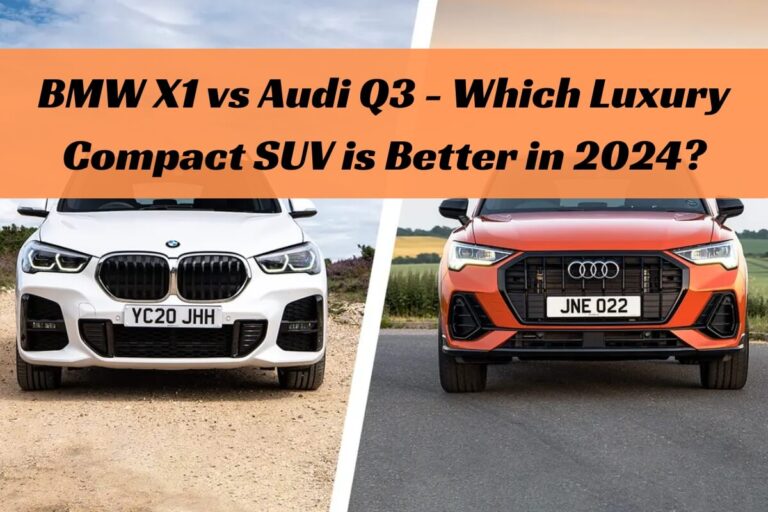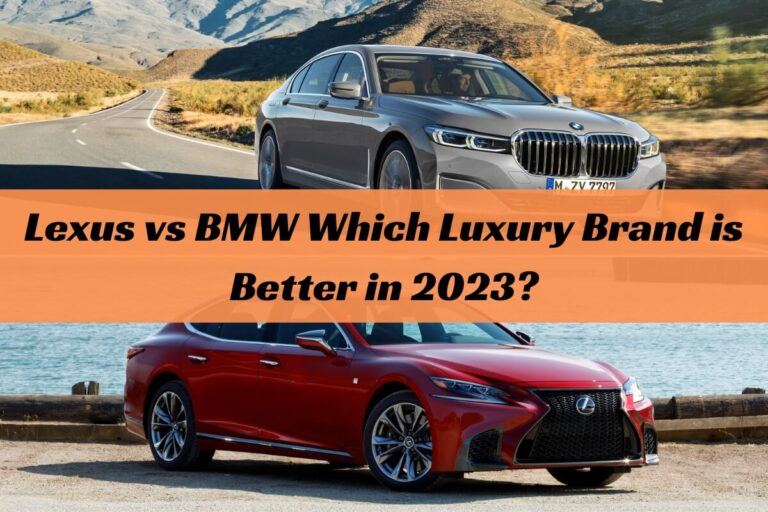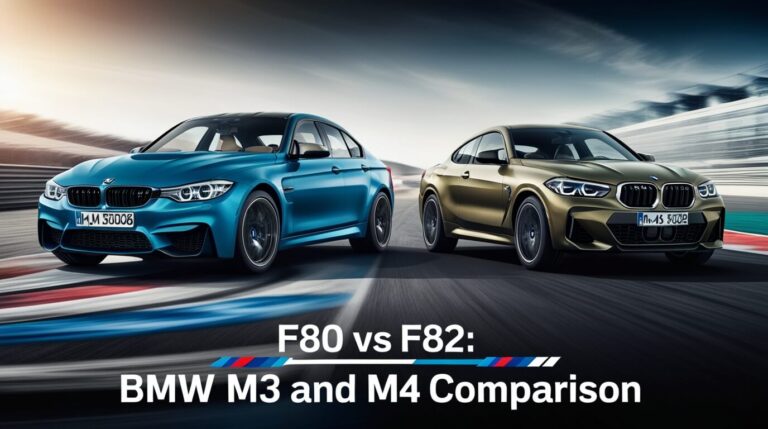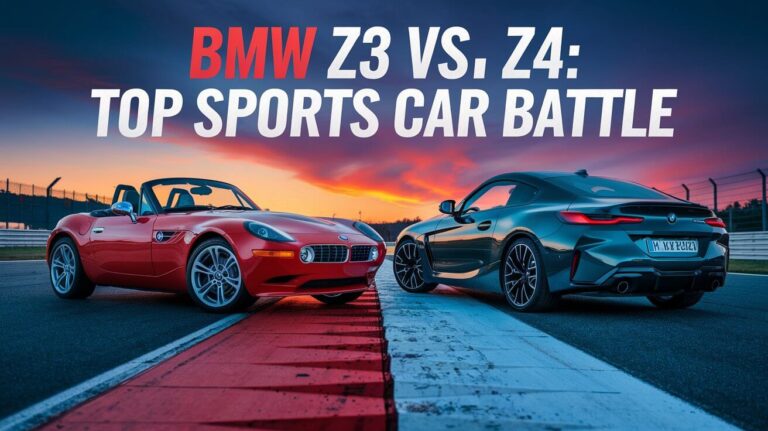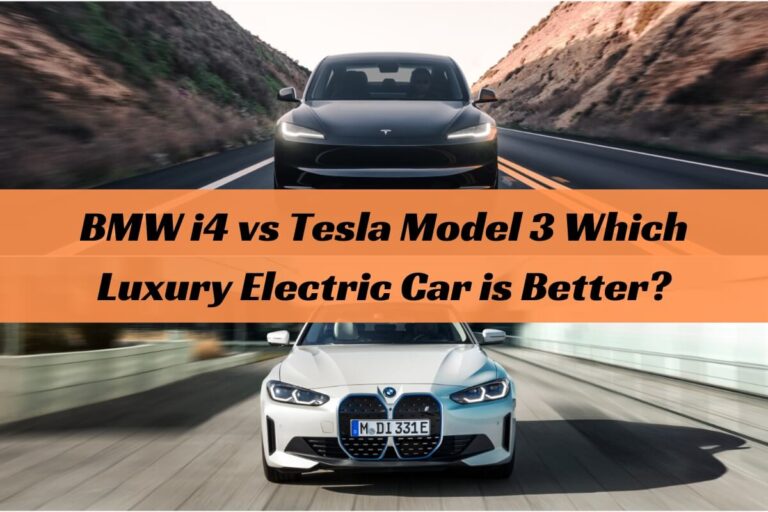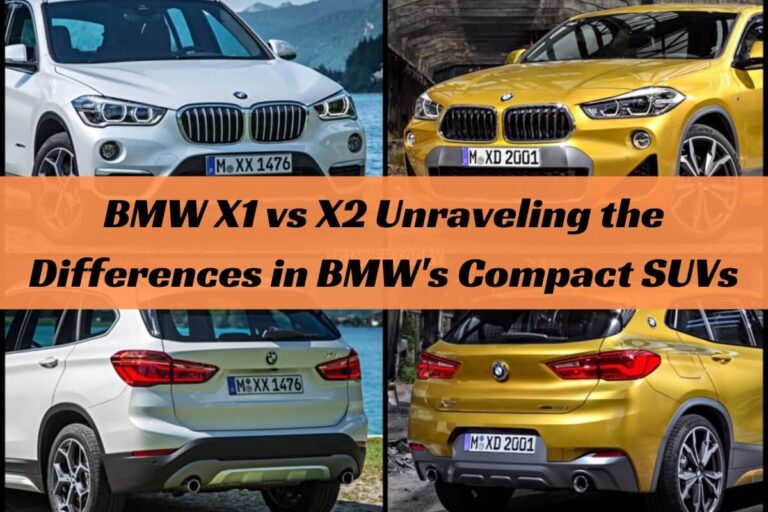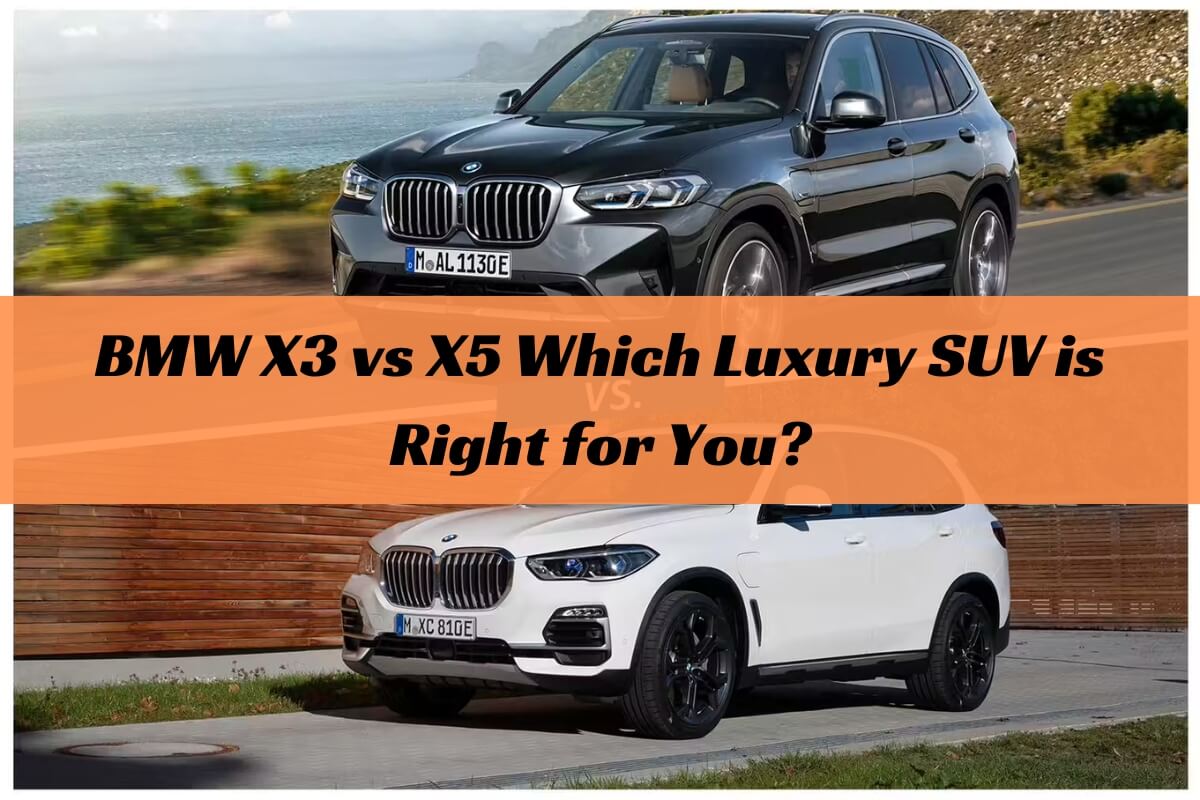
When it comes to luxury SUVs, BMW has established itself as a leader in the market, offering vehicles that strike the perfect balance between performance, comfort, and style. Two of the brand’s most popular models, the BMW X3 and BMW X5, have captured the attention of car enthusiasts and families alike. However, choosing between these two exceptional SUVs can be a daunting task.
In this comprehensive guide, we’ll explore the key differences between the BMW X3 and X5, helping you make an informed decision that aligns with your lifestyle and preferences.
To set the stage, let’s address the fundamental question:
What are the main differences between the BMW X3 and X5?
The primary distinctions lie in their size, engine options, seating capacity, cargo space, and pricing. The BMW X5 is larger, more powerful, and more expensive than the X3, but it also offers more room and a wider range of engine choices, including a plug-in hybrid variant.
Throughout this article, we’ll delve into the following aspects:
- Exterior design and styling
- Performance and driving dynamics
- Interior space, comfort, and technology
- Safety and reliability ratings
- Pricing and ownership costs
Whether you’re a family looking for a spacious and versatile SUV or an individual seeking a perfect blend of luxury and performance, this guide will provide you with the insights you need to make the best choice.
Exterior Design: Sleek and Sophisticated
Both the BMW X3 and X5 embody the brand’s signature design language, exuding a sleek and sophisticated appearance. However, there are subtle yet distinct differences that set them apart.
The BMW X3 showcases a more compact and athletic silhouette, with clean lines and a sculpted side profile. Its large kidney grille and sleek headlights contribute to its modern and sporty appeal, making it an ideal choice for those who prefer a subtler yet stylish SUV.
On the other hand, the BMW X5 commands attention with its larger and more imposing presence on the road. Its boxy and angular design, complemented by sharp edges and air vents, lends it an assertive and rugged appearance. The X5’s design cues are tailored for those who prefer a more dominant and muscular SUV that exudes confidence.
Both models offer a range of wheel options and exterior color choices, allowing you to personalize your vehicle according to your tastes.
Performance and Driving Dynamics
When it comes to performance, both the BMW X3 and X5 deliver exhilarating driving experiences, courtesy of their powerful engine options and BMW’s renowned engineering prowess.
The BMW X3 offers a choice of potent turbocharged petrol and diesel engines, with the top-of-the-line M40i variant boasting a 3.0-liter inline-six engine that produces an impressive 503 horsepower. Despite its compact size, the X3 handles remarkably well, offering agile and responsive steering, making it a joy to drive on winding roads.
The BMW X5, being the larger of the two, takes performance to the next level. It offers a wider range of engine options, including a high-performance M50i variant with a 4.4-liter twin-turbo V8 that churns out a staggering 617 horsepower. Additionally, the X5 is available as a plug-in hybrid (X5 xDrive50e), delivering impressive fuel efficiency without compromising performance.
Both SUVs come equipped with BMW’s intelligent all-wheel-drive system, ensuring optimal traction and control in various driving conditions. However, the X5’s larger size and longer wheelbase provide a more stable and planted feel, especially at higher speeds.
Interior Space, Comfort, and Technology
When it comes to interior space and comfort, the BMW X3 and X5 cater to different needs and preferences.
The BMW X3 is a true five-seater SUV, offering ample space for passengers and luggage. Its well-designed cabin features high-quality materials, such as leather upholstery and brushed aluminum accents, creating a premium and inviting atmosphere. While the X3 may not be as spacious as its larger sibling, it strikes a balance between comfort and practicality, making it an excellent choice for families or individuals who prioritize a more compact and maneuverable SUV.
In contrast, the BMW X5 offers a more spacious and versatile interior. With its larger dimensions, the X5 can accommodate up to seven passengers (depending on the configuration), making it an ideal choice for larger families or those who frequently transport more people and cargo. The X5’s cabin is adorned with premium materials and features, such as a panoramic sunroof and advanced infotainment systems, elevating the overall luxury experience.
Both models are equipped with the latest technology and safety features, including BMW’s iDrive infotainment system, which seamlessly integrates with Apple CarPlay and Android Auto. Additionally, they offer a suite of driver assistance and safety technologies, such as automatic emergency braking, lane departure warning, and adaptive cruise control.
Safety and Reliability
When it comes to safety and reliability, BMW has a well-deserved reputation for excellence, and both the X3 and X5 uphold these standards.
In terms of safety ratings, both SUVs have received top marks from reputable organizations like the National Highway Traffic Safety Administration (NHTSA) and the Insurance Institute for Highway Safety (IIHS). The X3 has earned a 5-star overall safety rating from the NHTSA, while the X5 has received a 4-star rating.
Reliability is another crucial factor to consider, and BMW consistently ranks among the top brands in this regard. Both the X3 and X5 have been recognized for their dependability by organizations like Consumer Reports and J.D. Power, providing peace of mind for owners.
It’s worth noting that while safety and reliability ratings can be useful benchmarks, real-world experiences may vary. Proper maintenance and attentive driving habits play a significant role in ensuring the longevity and safety of any vehicle.
Pricing and Ownership Costs
Naturally, pricing is a crucial consideration when choosing between the BMW X3 and X5. As you might expect, the larger and more feature-laden X5 commands a higher price tag than its compact counterpart, the X3.
The 2024 BMW X3 has a starting Manufacturer’s Suggested Retail Price (MSRP) of $46,900, while the 2024 BMW X5 starts at $65,200. It’s important to note that these prices can vary based on trim levels, optional features, and dealer markups.
While the upfront cost may be higher for the BMW X5, it’s essential to consider long-term ownership costs as well. Factors such as fuel efficiency, maintenance costs, and insurance rates can impact the overall cost of ownership over time. Additionally, the X5’s larger size and more powerful engine options may result in higher fuel consumption and maintenance expenses compared to the X3.
When considering pricing and ownership costs, it’s crucial to evaluate your budget and prioritize the features that matter most to you. If you’re looking for a more affordable entry into the world of luxury SUVs, the BMW X3 may be the more practical choice. However, if you have a larger budget and require more space and performance, the BMW X5 might be the better option.
The Bottom Line: Which One is Right for You?
Ultimately, the choice between the BMW X3 and X5 comes down to your specific needs, preferences, and lifestyle. Both SUVs offer exceptional craftsmanship, performance, and luxury, but they cater to different segments of the market.
If you’re seeking a more compact and agile SUV that strikes a balance between performance and practicality, the BMW X3 might be the ideal choice. Its sleek design, responsive handling, and efficient performance make it an excellent option for city dwellers or those who prefer a sportier driving experience.
On the other hand, if you require more interior space, seating capacity, and uncompromising performance, the BMW X5 is the way to go. Its larger dimensions, more powerful engine options, and versatile interior make it a practical choice for families or individuals who frequently transport passengers and cargo.
Regardless of your decision, both the BMW X3 and X5 represent the pinnacle of luxury SUVs, offering a perfect blend of style, performance, and comfort. By carefully considering your specific requirements and evaluating the pros and cons of each model, you can make an informed decision that will provide you with years of driving pleasure and satisfaction.

